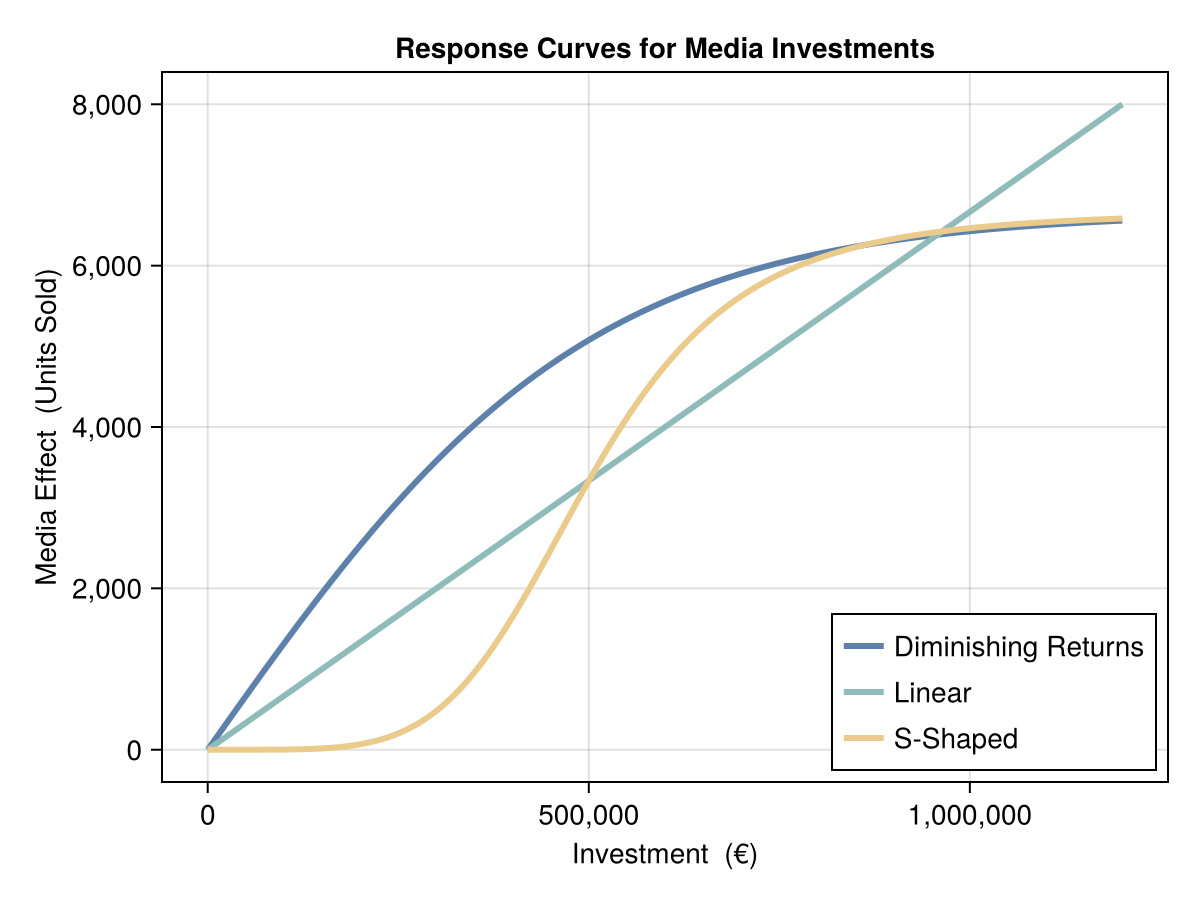In media advertising, the relationship between your investment and its effect is rarely straightforward. It’s essential to recognize how different levels of spending generate varied outcomes. This understanding is represented through “response curves,” which show how incremental investments affect performance metrics, like sales or brand awareness.
The Shape of Response Curves

Linear Response
In a linear response curve, the relationship between investment and outcome grows proportionally. In theory, doubling your media budget leads to a doubling of your results. However, in practice, this is rare, as external market factors and audience saturation usually cause returns to taper off.
Diminishing Returns Curve
The most common curve in media advertising is the diminishing returns curve, represented mathematically by a tanh function. It shows that early investments yield strong gains, but after a certain point, each additional dollar produces less and less impact. This is due to audience saturation, where the majority of your target audience has already been reached, and further spending provides minimal added value.
S-shaped Response Curve
The S-shaped or hill function response is more complex. It starts with a period of slow growth (small spend yielding little return), followed by a rapid increase as media investment hits a critical mass, then finally tapering off into diminishing returns. This curve often applies when advertising aims to drive new market penetration or introduce a new product where early investment has to “prime” the market before larger returns are visible.
Why Picking the Correct Response Curve Is Critical
Realistic Expectations**
Choosing the right curve helps set realistic expectations about how far your marketing dollars can stretch. A linear assumption can lead to overestimation of returns, while recognizing diminishing returns early can prevent wasteful overspending.
Better Budget Optimization
Understanding the true nature of your response curve enables more precise budget allocation. For instance, with diminishing returns, it becomes clear when a specific channel has reached its maximum effectiveness, allowing you to shift the budget to more fruitful channels.
Strategy in Media Campaigns
Accurately modeling response curves provides insight into when you should increase or decrease spending. In an S-shaped curve, an initial low ROI doesn’t always mean a strategy is ineffective it may simply require a critical threshold to be reached before seeing high returns.
Incorporating Different Curves into Your Marketing Mix
The choice between linear, diminishing returns, or S-shaped response models can heavily influence marketing mix models (MMM). These response functions form the foundation for effective media planning and strategy. Picking the wrong one may lead to under- or over-investing in channels, ultimately skewing the ROI of your entire media campaign.
With an informed approach to response curve modeling, marketers can not only avoid wasted media spend but also optimize campaigns for maximum impact. Understanding the nuances between different types of response curves is vital for effective resource allocation, strategic campaign design, and achieving a sustainable ROI.